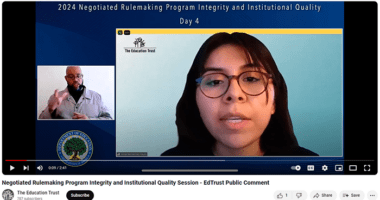Zero Down on College Is As Gimmicky As It Sounds
Michigan is the latest in a number of states jumping on the “Pay It Forward” bandwagon, which is headed as far away from a solution to the spiraling college price problem as possible. What’s more troubling than the fact that at least 19 states are already considering it? That this proposal is any legislator’s dream. It masks the burgeoning college expense problem and applies a fix that, on the surface, appeases many; but in reality, it’s simply putting off a politically difficult issue for the next election cycle (and beyond) — all at the expense of students.
Pay It Forward, an initiative first pushed by the Economic Opportunity Institute in Seattle, proposes that students pay for college after graduation through a prescribed percentage of their income over a defined number of years. It’s billed as a “debt-free” approach to higher education, when, in fact, it’s just a giant student loan program. It does nothing to address the causes of skyrocketing tuition (state disinvestment and lack of accountability among institutions, to name a few) — and it could even create more problems for already debt-ridden graduates. It’s not Pay It Forward; it’s Pay It Yourself and Pay More Than Ever. Here’s why:
- Estimates indicate that students will pay even more than they already are for a college degree. Proposals vary, but the one floating around in Oregon pushes to garnish 3 percent of graduates’ wages for 24 years, which would mean an additional $7,000+ for a degree.
- Pay It Forward only deals with tuition. What about room and board, which is often half the cost of attendance? Books? Students will likely still take out loans, creating a double whammy (garnished wages and student loan payments) for some post-graduation.
- With no tuition bills, where would need-based financial aid go? “Once we establish an alternative to the need grant, we’re not going to go back,” Karen Strickland, of the American Federation of Teachers, told the Associated Press. She’s right. Pay It Forward could indirectly sever these programs for our nation’s low-income students, who face greater financial hurdles than their more affluent peers.
A college education (earned in two years, four, or more) is a ticket to a stable life, one with a career and a manageable income. That costs money. Purporting to be anything else is misleading, particularly in an environment that is already saturated with mismatched information about college choices and costs. By pushing a college degree marked Debt-Free!*, lawmakers are luring prospective students and their families into long-term debt while they brush off their responsibility to contain costs. Lawmakers in Michigan (and other states) could better expend their energies by getting to the root of the problem and encouraging states to re-invest in higher education, while holding institutions accountable for their ever-rising fees. But that would require more thoughtful discussions and research around accountability, state incentives, and the drivers behind college costs — none of which is as easy as signing onto a gimmick with a do-good name like Pay It Forward.












